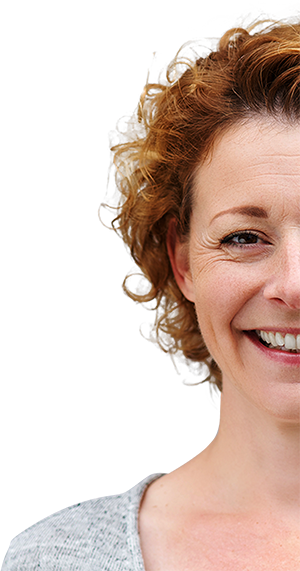Group A1a
- 13 up to and including 19 Dezember
Period(s) of stay (7 days)
- 13 up to and including 19 Dezember
- 12 Januar (phone call)
Follow-up
- 12 Januar (phone call)
- €1668,-
Compensation
- €1668,-

Study groups
The research physician about this research
The study compound is being developed for the treatment of heart failure. In this clinical trial, we investigate how the study compound is processed and eliminated by the body and how well it is tolerated when it is used by healthy participants.
Für Deutschland: Bitte beachten Sie: Die Arzneimittelstudien finden im niederländischen Groningen statt. Sie müssen Englisch oder Niederländisch sprechen, verstehen und lesen können, um an einer Studie teilnehmen zu können.
Who can participate?
Note:
As a female you can only participate if you meet one of the following conditions:
As a male you can only participate if you meet one of the following conditions;
What is the compensation for this research?
For participation in one of the groups of part A of the trial, you will receive a gross compensation of €1668.
For participation in one of the groups of part B of the trial, you will receive a gross compensation of €3199.
For participation in one of the groups of part C of the trial, you will receive a gross compensation of €3850.
For participation in one of the groups of part D of the trial, you will receive a gross compensation of €4718.
Travel expenses will be reimbursed based on the distance traveled (€ 0.21 net per kilometer) with a minimum of € 13 and a maximum of € 176.40 (840 kilometers) per round trip, regardless of the mode of transportation
How long does this research take?
The trial consists of 4 parts: part A, part B, part C and part D. You can only participate in one part of this clinical trial.
Part A consists of 1 period during which you will stay in the research facility in Groningen (location van Swietenlaan 6) for 7 days (6 nights). The follow-up visit will take place on the day of your departure from the research facility. 21 to 27 days (about 4 weeks) after your departure from the research facility, you will be contacted by phone for some questions.
Part B consists of 1 period during which you will stay in the research facility in Groningen (location van Swietenlaan 6) for 13 days (12 nights). The follow-up visit will take place 4 to 5 days after your departure from the research facility. 20 to 26 days (about 3 and a half weeks) after the follow-up visit, you will be contacted by phone for some questions.
Part C consists of 1 period during which you will stay in the research facility in Groningen (location van Swietenlaan 6) for 16 days (15 nights). The follow-up visit will take place 4 to 5 days after your departure from the research facility. 20 to 26 days (about 3 and a half weeks) after the follow-up visit, you will be contacted by phone for some questions.
Part D consists of 1 period during which you will stay in the research facility in Groningen (location van Swietenlaan 6) for 20 days (19 nights). The follow-up visit will take place 3 to 4 days after your departure from the research facility. 21 to 27 days (about 4 weeks) after the follow-up visit, you will be contacted by phone for some questions.
Note: You must be available for all dates to be able to participate in this clinical trial.
The trial consists of 4 parts: part A, part B, part C and part D.
In part A you receive the compound once.
In part B you receive the compound once or twice daily for 10 days (about 1 and a half weeks).
In part C you receive the compound twice daily for 14 days (about 2 weeks).
In part D you receive the compound twice in combination with an approved medicine.
Sie dürfen höchstens 4 Mal pro Jahr an einer Studie teilnehmen. Zwischen zwei Studien müssen mindestens 30 Tage liegen. Für einige Studien gilt eine längere Wartezeit.
Während der Studie können leichte Beschwerden wie Kopfschmerzen oder Übelkeit auftreten. Dies kann durch das Medikament verursacht werden. Aber es kann zum Beispiel auch daran liegen, dass Sie für die Studie nüchtern bleiben müssen. Diese Nebenwirkungen sind unangenehm, aber glücklicherweise nicht gefährlich.
Bevor ein Medikament am Menschen erprobt werden darf, wurde es bereits umfassend in einem Labor getestet. So lässt sich gut vorhersagen, welche Nebenwirkungen eventuell bei Ihnen auftreten werden, damit Sie sich darauf einstellen können. So kommt es fast nie vor, dass Teilnehmer unter unerwarteten Nebenwirkungen leiden.
Eine Studie umfasst in der Regel fünf bis zwölf Teilnehmer. Die Gruppen werden so zusammengestellt, dass sie optimal zu den Anforderungen der Studie passen. Diese Anforderungen sind in jeder Studie beschrieben. Sehen Sie sich alle aktuellen Studien an.
ICON führt häufig Studien mit radioaktiv markierten Medikamenten durch. Damit können wir untersuchen, wie und wie schnell das Medikament im Körper aufgenommen, verarbeitet und ausgeschieden wird. Bei einer Studie mit radioaktiv markiertem Medikament ist das Risiko von Nebenwirkungen geringer als bei anderen Studien. In diesen Studien wird eine viel geringere Dosis verabreicht. Erfahren Sie mehr über Studien mit radioaktiv markierten Medikamenten.